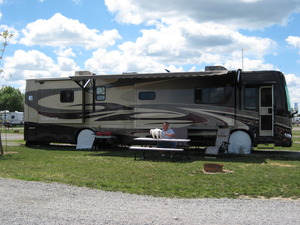Psychoanalytic Criticism is based mostly on Sigmund Freud’s work. Freud believed in the id, ego and superego. Psychoanalytic critics also rely upon the work of Jacques Lacan. Lacan believed that before a child realizes that his mother is not entirely his, the child experiences the mirror stage. In this stage, the child can view himself and his mother as individuals. This stage quickly brings on Freud’s Oedipal stage, in which the child competes with the parent of the same sex for the affection of the other parent.
As we pass out of the mirror stage, we see ourselves from the outside, as others would see us. This creates a loss in humans; we lose “‘that uniqueness that one could enjoy in one’s self-being’, the element that Lacan calls the object a” (Collings, 285). In Frankenstein, ‘object a‘ is Frankenstein’s creation, his monster. The creature possesses all of the qualities that humans suppress, or should suppress, as children: villainy, murderous thoughts, revenge, etc.
Critics from the psychoanalytic school of thought believe that Frankenstein wanted to replace his dead mother. Instead of doing what every other man does, marry someone like his mother, Frankenstein rejected Elizabeth, who was physically like his mother and had a history like that of his mother. Frankenstein wanted to recreate his mother, but instead he made a creature comprised of the socially repressed elements of Frankenstein (object a)and his wish for his mother. Frankenstein’s creature comprises all of the unacceptable traits of humans, those we usually suppress. These traits may actually be a representation of those traits that Frankenstein wishes he had.
Mary Shelley “tries to humanize the position of the impossible object [a], to imagine what it would be like for a monster to sustain personhood when everybody around him treats him as an utterly alien being” (Collings, 287 – 288). Shelley is trying to show that the creature is not inherently monstrous, but that society made him that way. The creature wants to become accepted in the social world, to have a wife and a family, and to have someone to talk to. This desire for the creature to have a mate and Frankenstein’s refusal to create the mate caused both of the demise of both the creature and Frankenstein, for Frankenstein wouldn’t have his dark half any longer.
When the creature told Frankenstein that he wanted another creature like himself, a female, Frankenstein agreed after a mild argument with his creature but later recanted; he would not make another monster: “never will I create another like yourself, equal in deformity and wickedness” (Shelley, 146). The creature believed that he is was wicked because society and his creator shunned him. Frankenstein destroyed the female creature and vowed to never make another. This upset the creature greatly; he would never know happiness and was going to make sure that Frankenstein didn’t either. The creature told Frankenstein “I shall be with you on your wedding-night” (Shelley, 146).
After Frankenstein’s marriage to
Elizabeth
, they travel to a remote hotel. Frankenstein hears a noise and goes to investigate, leaving
Elizabeth
behind. Perhaps deep down Frankenstein wanted to be rid of
Elizabeth
. What better way to get rid of her than to leave her unattended when the creature vowed to come and kill her? Frankenstein had been groomed towards marring
Elizabeth
since they were children, but is unable to leave her. Frankenstein leaves her for the creature because he is unable to take any action himself.
What started out as a way to replace his mother ended in the death of everyone he cared for. Frankenstein created a monster made of all the socially unacceptable traits and used that monster to accomplish the tasks that he could not.
Works Cited
Collins, David. “Psychoanalytic Perspective”. Ed. Johanna M. Smith. 2d. edition.
Boston:
Bedford
, 2000.
Shelley, Mary. Frankenstein. Ed. Johanna M. Smith. 2d. edition. Boston:
Bedford
, 2000.

